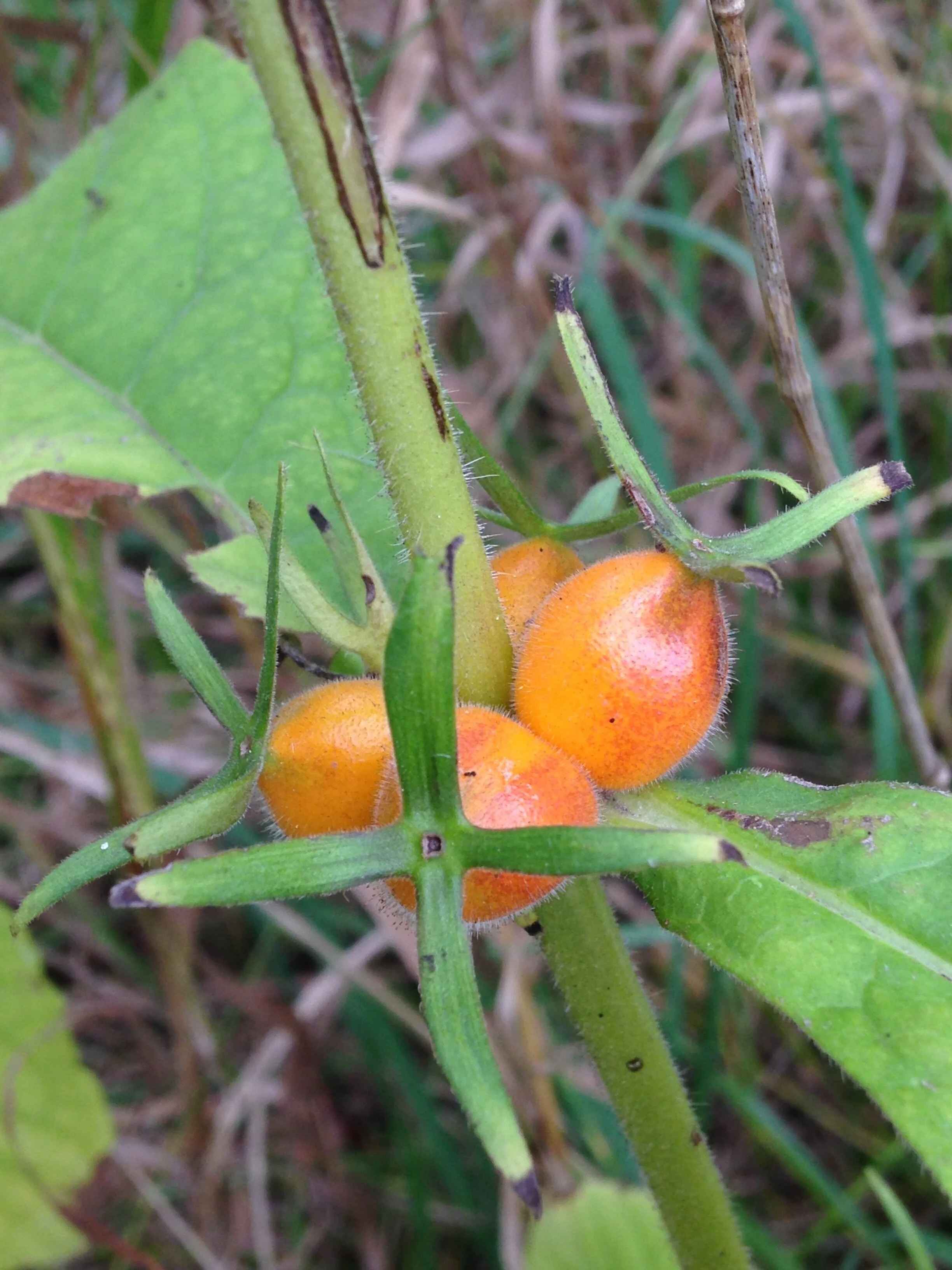Who’s This Plant?
I was walking along a trail beside the Eramosa River at the Magic Kingdom (a favorite wandering/running spot) when I spotted a strange habit of a plant in the bushes off to the side. The plant kind of looked like a Milkweed (Asclepias spp.) of some sort, but as I looked closer I realized that the flowers were definitely not the unusual and complex Milkweed flowers. I then wondered about the Mint (Lamiaceae) family as the flowers were growing in the axils, but the flower structure wasn’t right, and the stalk wasn’t square like most Mints. My friends weren’t as interested in the plant and had already disappeared around the corner so I quickly tried to remember Newcomb’s “Three Classifications” key so I could look up this new plant when I got home. I counted the parts/petals of the flowers and there were 5, but they seemed to be growing together to form a tube before splitting at the outer end. I then noticed that the leaves were oppositely arranged, with two leaves emerging from the same point on the stalk, growing in opposite directions, and that the leaves themselves were “entire” or that they weren’t toothed or serrated, nor were they lobed or divided. So I took some more photos to help me as references when I got home, then ran after my friends who were checking out some Turkey (Meleagris gallopavo) tracks when I caught up to them.
When I got home I broke out the Newcomb’s Guide to Wildflowers and began my search. This led me to the Triosteum genus and eventually to Triosteum aurantiacum, otherwise known as Orangefruit Horse-Gentian! Success! I i.d.’d the plant. But now that the initial introduction was made I was curious as to who this plant likes to hang out with, and where? What do they need to grow well and thrive? Do they have to deal with any pests? Can they teach me about the ecology they are embedded within?
Triosteum aurantiacum isn’t actually in the Gentian family (Gentianaceae), but instead is in the Honeysuckle family (Caprifoliaceae) and the Triosteum genus has three species native to this continent. I think the tubular flowers must have reminded someone of the Gentians so they named it that. I got to wondering what the use of the prefix “horse” in a plant name implies? Through my research it seems to be any plant that is larger or more coarse than the one named, thus Horse-Gentian is larger, and more coarse, than those in the Gentianaceae family.
Triosteum is a cool word derived from Greek. The prefix Tri is probably familiar to most as meaning 3, and osteum means “bones”, so together the genus name means “3 bones” referring to the hard seeds per fruit. The species name, aurantiacum is a New Latin referring to the “auranti”, orange coloured fruit. There is a very similar species of Triosteum found within the same regions, Triosteum perfoliatum, but this species is differentiated from the T. aurantiacum by the stem which appears to pierce through the leaves (perfoliatum meaning “perforated leaves”).
This is a perennial plant who loves rich well drained deciduous forests with good soil from Quebec down to Georgia, Nova Scotia to Nebraska, but I actually found this particular plant at the edge of a thickety natural hedge between a path and a river. Where I am, within the Great Lakes region, they like to flower around June-July (I came across this one in full bloom on May 29th).
I have read that Triosteum aurantiacum flowers attract pollinators with long tongues like Bumblebees (Bombus spp.) and Anthophorid Bees (Anthophora bomboides is an example of one species in my region). The beautiful Snowberry Clearwing Moth (Hemaris diffinis) caterpillars will feed on Triosteum species and other members of the Honeysuckle family.
I went through the libraries in my house (I guess we only have two, a naturalist library and an herbalists library) and found only 5 mentions of the Triosteum genus, and of those 5, I think 2 mention T. aurantiacum. Because of the extreme similarities between these two species I would assume that the write ups of medicinal actions would be applicable to both T. perfoliatum and T. aurantiacum. In the book “Medicinal and Other Uses of North American Plants” by Charlotte Erichsen-Brown there are multiple mentions of the root being used as an emetic (helps you vomit) and the leaves in a decoction as a diaphoretic (encourages sweating) to help break fevers, hence some calling the genus “Feverwort”. In the Peterson Guide to Medicinal Plants and Herbs by Steven Foster and James Duke, they mention quite a few functions of the plant including a cold tea for colds and sore throats, root poultice for “snake bites, sores and felons” (felons being another word for an abscess on the finger close to the finger nail, also “whitlow”). Thomas Elpel writes in Botany In A Day that Triosteum root tea is used to help regulate menstruation and constipation. A powerful plant indeed.
While examining this plant in the literature I still have many questions about who the plant associates with, which insects might be a part of the lifecycle, the biochemistry of the Triosteum genus and how those compounds interact with their neighbours, and a big one, how are seeds commonly dispersed? Once you figure out that one, you can start to help the propagation of a plant, which is a very important role, especially if you want to learn more or start being in relationship with a plant long-term.
I’ll have to go back soon and check in on the plant and see where they are at in their lifecycle and if the fruit develops anytime soon, collect one or two and plant the three seeds within and see how they turn out.
UPDATE : Different plants, but the same species. I found out what the fruit and seeds look like:
04.09.2021









